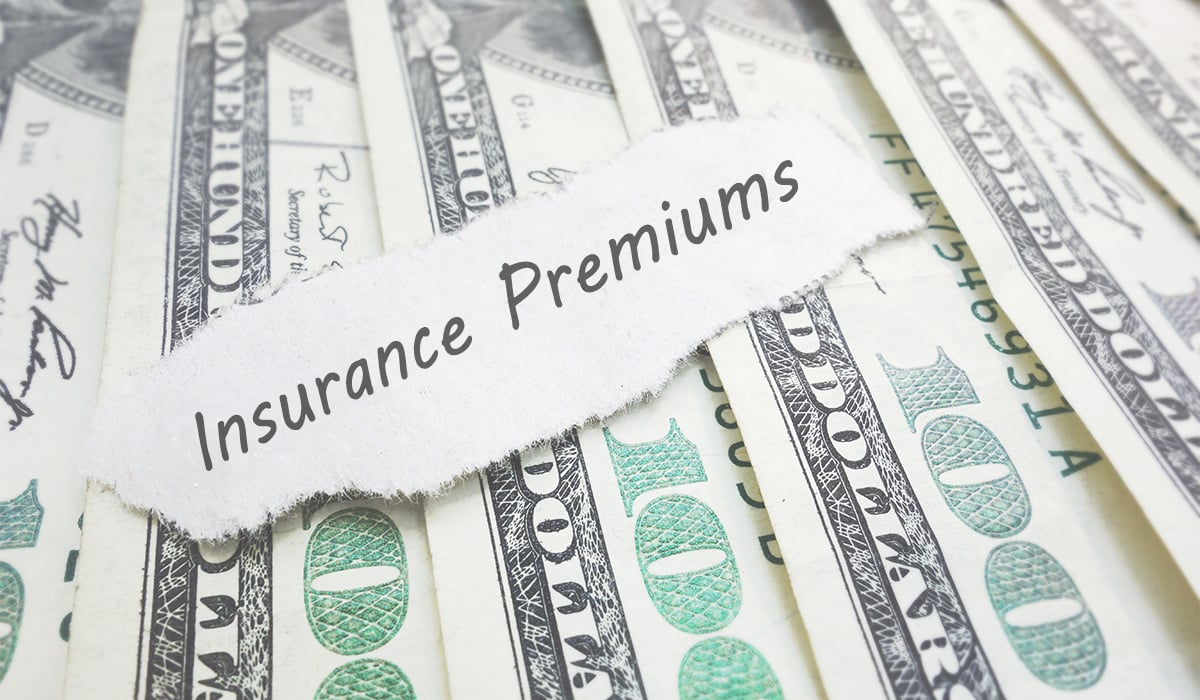Topics:
Search for topics or resources
Enter your search below and hit enter or click the search icon.
March 12th, 2024
3 min read

We get it–it’s renewal season, and your insurance carrier has decided, “Hey, know what’s a good idea? Let’s increase the cost of your premium.” No matter how good you’ve been at avoiding claims, you’re still the one getting hit. To say it’s frustrating is a severe understatement. It's more accurate to say it's infuriating.
It makes you wonder where the money for your premium goes. Why are you paying a high cost when you don’t seem to benefit? Because the industry will certainly not let you know.
At ReNu Insurance Group, we’ve helped more than our fair share of business owners like you, who are frustrated with how much they’re paying in premiums, only to seemingly never get anything out of it. And, like you, they have no idea where their money’s going.
This article will explain where your insurance premiums go, what makes up your premium, and why you see increases. That way, you can be closer to figuring out strategies to decrease your insurance costs.
Through the law of large numbers, the insurance carriers aggregate as many businesses that fit a particular risk profile into an enormous pot. Out of that pot, they pay the salaries of their employees, rent, paper, and SG&A (Selling, General, and Administrative) expenses.
The carriers are juggling all of these expenses to make a profit. Their goal is to make a profit. Your premium is their revenue. Your insurance premium also goes toward paying claims. They’re also investing some of that money. Most publicly traded companies will get revenue from your premium and their investments.
You'll never see the amount you pay into someone else’s claim. With many variables to account for, pinpointing what percentages go into claims, profits, etc., is next to impossible.
Your insurance carrier knows they can expect losses. This is where actuaries-professionals use high-level math to measure risk and uncertainty, predict expected losses, and create a loss fund.
This is how your premium is derived:
Expected losses + their profit + their expenses = your premium amount

A particular zip code, age, car, etc., are all factors in an actuarial calculation.
For example, using personal lines, your premium differs because the actuarial expected losses between an 18-year-old inexperienced driver and someone with more driving experience in their 40s are much different. An 18-year-old will have a higher propensity for losses.
Or someone with a DUI will be seen to have a higher propensity for losses. That person will pay more.
The carrier manages premiums by taking expenses, profit, and expected losses and combining them to sell to you. The ratio depends on your carrier. It can be 65:35, 60:40, 70:30, or however, they divvy your premium.
Regardless of how your premium is split up, the smaller portion is used for expenses while the larger is for your loss fund and their profit.
Ultimately, they hope that they have more winners than losers and that they make a profit.
These increases can be for a plethora of reasons.
For instance, in Florida, lawsuits are being filed related to auto accidents. Every personal injury lawyer advertises on their billboard, “If you go with us after an accident, it’s like winning the lottery.”
You’re seeing more:
These all affect your premiums.
This goes for both personal driving and commercial vehicles. Injury lawyers are licking their chops if you have a fleet of trucks.
Not always, but don’t expect decreases, even if you’ve been the kid who doesn’t get in trouble on the playground. You can expect your renewal rates to be flat before you see a decrease the next year.
You can minimize the amount of claims as best you can. Unfortunately, there’s always one business screwing it up for you. People driving like knuckleheads and businesses not trying to have the safest work environments are the ones that cause the claims to skyrocket (and you partially pay for it).
Interestingly, the insurance industry has done well in pre-programming you to incremental rate increases because “that’s just how it is.”
What you should be asking is, “Is there another way? Do I have to deal with premium increases? How do I stop buying insurance?”
You should be questioning why your rates are increasing every year. Even if it’s a flat renewal, should you be thankful your premium hasn’t increased when you haven’t been the problem child?
If you’re willing to take on more risk, there are alternatives such as high deductible plans, self-insured retention, and retrospective plans.
Paying higher insurance premiums for your business—especially when you’ve had little to no claims—should be a thing of the past. Taking on more risk now should only benefit you in premium costs in the future. Ensure you understand each of these plans to see which one is best for you.
To better understand each of these, you need to read our article called Insurance Strategies for Business Owners in a Bad Market. You’ll learn about alternatives in the traditional insurance market and about what captive insurers are.
For any questions, comments, or concerns, schedule a call with ReNu Insurance Group to talk to one of our insurance specialists.
Warren, the president and founder of ReNu Insurance, shifted from being a commercial pilot to the insurance industry after 9/11. He applied his aviation safety and risk management skills to insurance, creating ReNu's captive insurance model. This approach cuts costs and turns insurance into a strategic asset. An authority in captive insurance with advanced certifications, Warren drives innovative risk management solutions. Under his leadership, ReNu Insurance sets new standards, offering practical and financially smart risk management. Warren Cleveland, ACI, CIC, AAI
Topics: